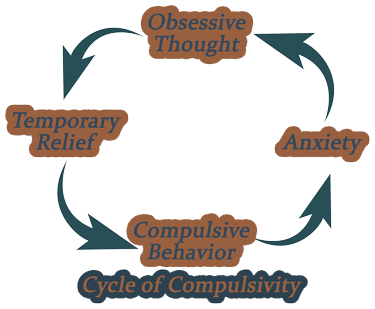Compulsive is…Compulsive Does
The Rise of Mental Health Awareness
Throughout the world, addiction and mental health issues continue to rise. Fortunately, as awareness and acceptance become more commonplace, those affected by these issues are looking for answers rather than living in secrecy. Many times a dual-diagnosis is applied to individuals dealing with both a substance abuse disorder and a co-occurring mental illness.
Mental illness disorders that are commonly diagnosed along-side substance abuse:
- Mood Disorders – e.g. Bipolar, Clinical Depression
- Personality Disorders – e.g. Borderline, Dissociative
- Eating Disorders – e.g. Anorexia, Bulimia
- Anxiety Disorders – e.g. Phobias, PTSD
- Psychotic Disorders – e.g. Schizophrenia, Delusional
Here we discuss how addiction and mental illness can lead to compulsivity, and vice versa, as these are some of the most discussed subjects concerning mental health.
Cause of Compulsion
Compulsive activities are developed around the repetition of a thought process or obsessive behavior. Generally, an internal fear or perceived risk is associated with the compulsive behavior. Performing the compulsive act is a way of seeking relief from the overwhelmingness of the repetitive thoughts and obsessiveness. The compulsive behavior itself is very narrow and precise without much variation, such as organizing or cleaning. The same goes for the mental state. One can be found counting or often analyzing what may seem to others as insignificant details. Over time this develops into an uncontrollable way of dealing with the unwanted internal grief, as it suppresses the stress for the short term.
Effect of Compulsion
Compulsions tend to eventually control an individuals life. Most times the behavior is irrational and is unwarranted to any results. The sequence of feeling relief while acting out the behavior turns into self-hatred due to resorting to the act for solace. In turn, this leads back to performing the compulsive behavior to restore a positive feeling. Can you see how easily this can turn into a constant cycle of internal negativity?
Common Compulsive Acts
The process of doing anything repeatedly has the possibility of developing into a compulsive behavior.
Some more familiar compulsive acts are:
- Betting and Gambling (Wagering More Than You Have, Losing It All)
- Spending and Shopping (Maxing Our Credit Cards, Borrowing From Family Members)
- Organizing and Cleaning (Scrubbing, Folding, Color Coding)
- Deception and Lying (Untruthful Stories, Hiding Whereabouts)
- Theft and Stealing (Taking from Loved One’s and/or Stores)
- Appearance and Looks (Modification, Over pampering)
- Diet and Eating (Restriction, Binging, Purging)
- Promiscuity and Sex (Multiple Partners, Paying for Sex)
- Ailments and Disease (Doctors Appointments, Emergency Room Visits)
Compulsive Behaviors Develop Into Process Addictions
Once the compulsivity takes over it becomes very habit forming. This then quickly becomes an addiction as the human mind relies upon these compulsive behaviors to stimulate and activate the pleasure sensors in the brain. The internal reward system release dopamine to neurotransmitters in the brain when engaging in the compulsive behavior. The constant need for pleasure is just like substance abuse addictions, in a way that the mind develops a craving for the compulsive act to find a pleasurable result. However, after long-term use of these behaviors, these once pleasureful acts no longer feel rewarding.
Test Your Compulsive Behaviors
Are your secret activities becoming a problem?
Use our one of our tests to better understand the extent of your habits:





